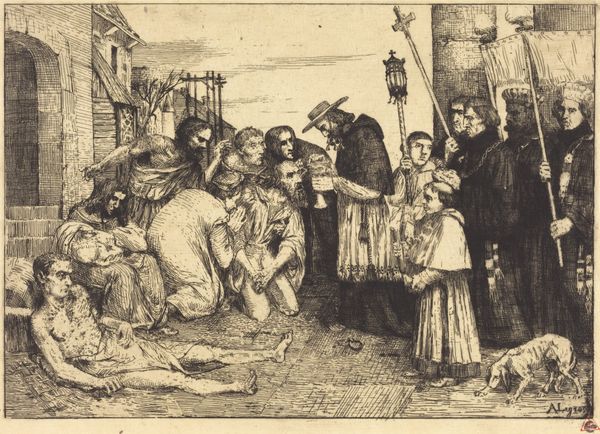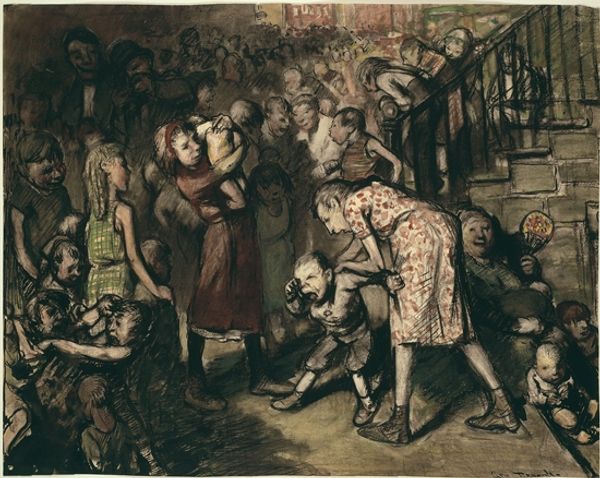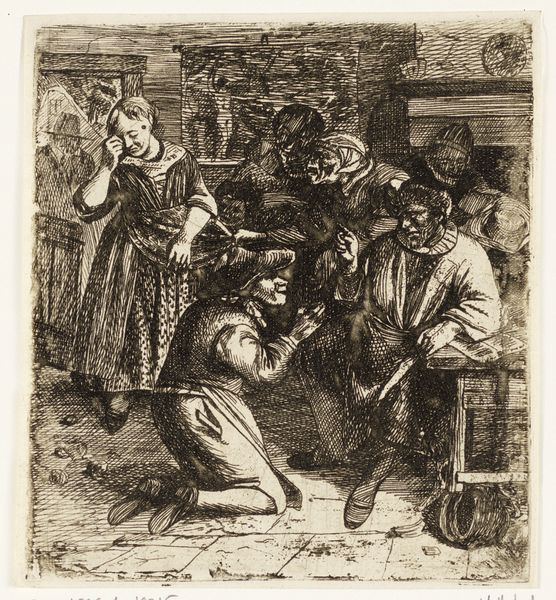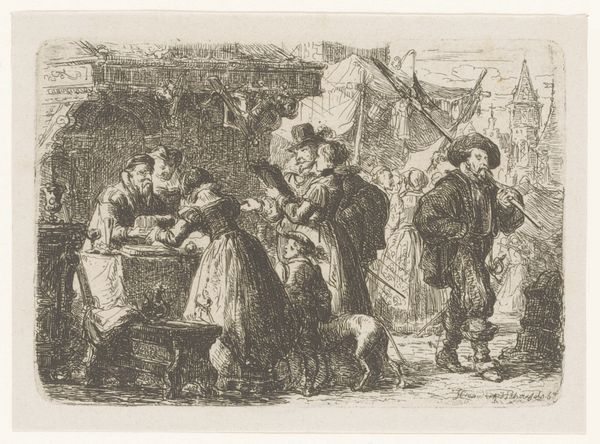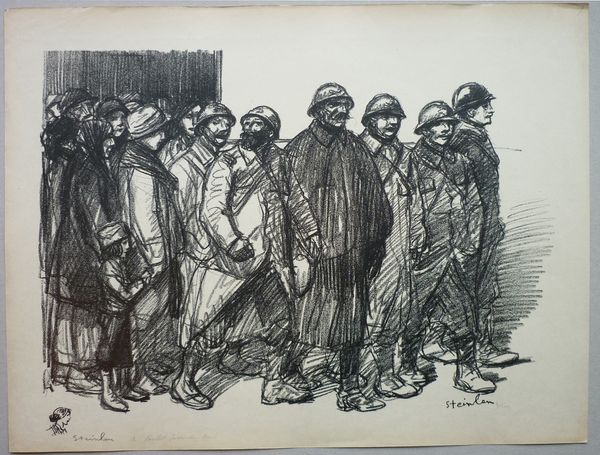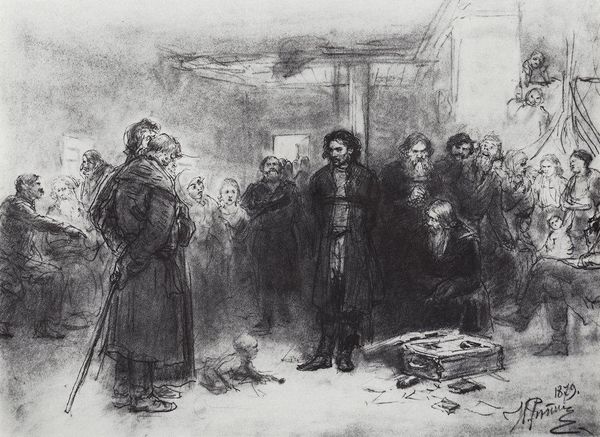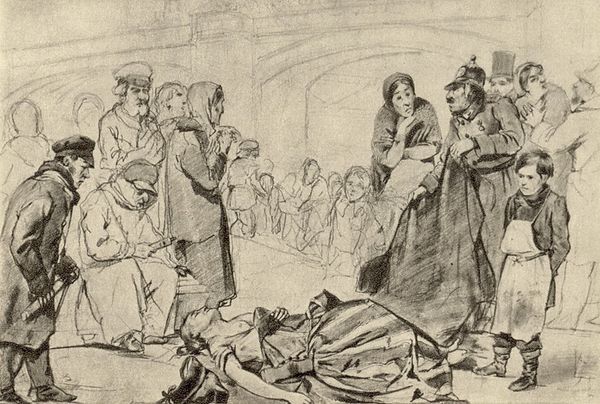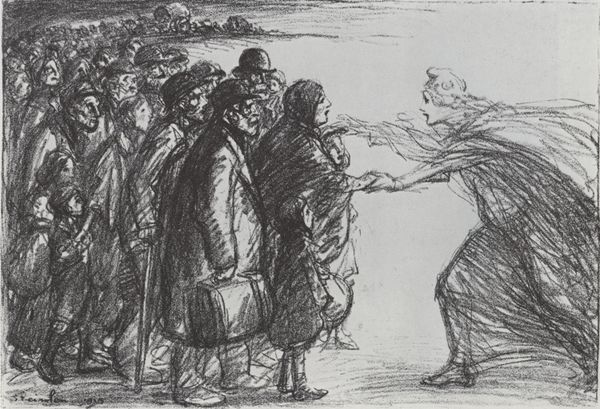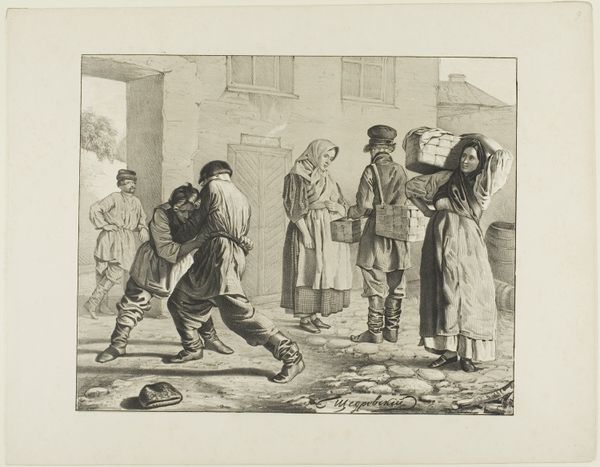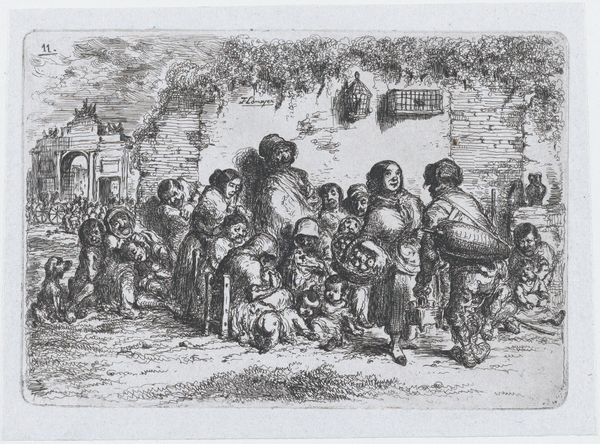
drawing, print, graphite, charcoal
#
portrait
#
drawing
#
narrative-art
#
ink painting
# print
#
pen sketch
#
pencil sketch
#
social-realism
#
expressionism
#
graphite
#
watercolour illustration
#
charcoal
#
history-painting
Copyright: Public domain
Curator: This drawing, "Les Interns - Sortie des geoles allemandes," made by Théophile Alexandre Steinlen in 1915 using graphite, charcoal, and print, portrays a somber group. I'm immediately struck by the textures he achieves with what seem to be simple materials. What draws you in? Editor: The crowd of people definitely creates a somber mood, almost bleak. And the style seems both realistic and a little exaggerated, capturing the harshness of the scene. How do you interpret this work, considering its materials and context? Curator: Well, consider the context. 1915, World War I raging. Steinlen, known for his social realism, likely made this print for wide distribution. Notice the starkness of the graphite and charcoal – readily available materials allowing for quick reproduction. It's not about opulent oil paints, but accessibility. This challenges our perception of "high art," wouldn't you say? How does that choice of inexpensive materials affect its reception, do you think? Editor: I see your point. The inexpensive materials almost amplify the message. It brings it down to earth and speaks directly to the people experiencing these hardships, or perhaps aimed to move those who weren’t. Curator: Exactly! Think of the labor involved in producing numerous prints – a collective effort to disseminate a message of human suffering. It connects directly to the working class, the primary consumers and subjects of his art. It bridges the gap between art object and social commentary. Editor: So, Steinlen used the medium itself, a readily available printmaking process, to directly engage with and comment on the societal realities of his time. The starkness complements the rawness of the depicted experience. It's about more than just representation; it’s about making art accessible and socially relevant. Curator: Precisely. Considering these aspects shifts the focus from mere aesthetic appreciation to an understanding of art as a product of its social and material conditions, as well as how consumption of that art by the masses impacts culture and thought. Editor: I never considered it in those terms before! Now I can appreciate Steinlen's choices as being about more than just visual representation but as conscious choices about production and distribution to influence the war effort at home.
Comments
No comments
Be the first to comment and join the conversation on the ultimate creative platform.

